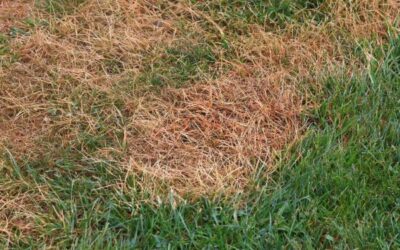Late winter is the perfect time to prepare your lawn for the lush growth of spring. Aeration—the process of creating small holes in the soil to allow air, water, and nutrients to penetrate down to the roots—is an essential step in ensuring your grass has the healthiest start possible. By addressing soil compaction and improving nutrient absorption, late winter aeration sets the stage for a vibrant, green lawn that thrives in the warmer months. For homeowners aiming to enhance the health and appearance of their yard, aeration is a crucial, often overlooked task.
Why Late Winter is the Perfect Time for Aeration
Timing is everything when it comes to aerating your lawn. Late winter offers several distinct advantages, particularly for cool-season grasses, which are common in many areas. At this time of year, your grass is transitioning out of dormancy and gearing up for its most active growth period. Here’s why late winter is ideal:
- Reduces Soil Compaction: Over time, soil can become compacted due to foot traffic, snow accumulation, and natural settling. Aerating in late winter alleviates this compaction before the intense growth period of spring begins.
- Improves Nutrient and Water Absorption: By creating pathways for nutrients, water, and oxygen to reach grassroots, aeration ensures your lawn gets the resources it needs to grow strong and healthy.
- Supports Root Development: Aeration encourages deeper root growth, which leads to a more resilient lawn capable of withstanding environmental stressors like drought and heat later in the year.
- Prepares for Overseeding: If you’re planning to overseed your lawn, aeration provides the perfect soil conditions for seeds to take root and thrive.
How Aeration Works
Aeration involves removing small plugs of soil from the lawn to create spaces where air, water, and nutrients can flow freely. This process is typically done using a mechanical aerator, but hand tools can be used for smaller areas. The removed soil plugs are left on the surface, where they naturally break down and enrich the soil below.
Steps for effective aeration include:
- Check Soil Moisture: The soil should be moist but not waterlogged for aeration to be effective. Too dry, and the process will be difficult; too wet, and it may damage the lawn.
- Mark Obstacles: Identify sprinkler heads, utility lines, or other obstacles to avoid damaging them during the aeration process.
- Aerate the Lawn: Use an aerator to create evenly spaced holes across the lawn, paying extra attention to high-traffic areas and compacted zones.
- Leave the Plugs: Let the soil plugs decompose naturally, returning valuable nutrients to the soil.
- Follow Up with Lawn Care: After aeration, consider overseeding and applying fertilizer to maximize the benefits.
The Benefits of Late Winter Aeration
Aerating your lawn in late winter provides long-term benefits that extend far beyond the spring. Here’s what you can expect:
- Healthier Grass: Aeration helps your grass grow thicker and greener by improving root access to essential nutrients.
- Reduced Thatch Build-Up: Thatch, the layer of organic material that builds up between the grass and soil, can suffocate your lawn if it gets too thick. Aeration breaks it up, allowing microorganisms to decompose it naturally.
- Better Drainage: Aeration improves water infiltration, reducing puddling and runoff.
- Stronger Lawn Resilience: A well-aerated lawn is better equipped to handle foot traffic, heat, and drought, making it more durable throughout the year.
Common Mistakes to Avoid When Aerating
To get the most out of your aeration efforts, it’s important to avoid some common pitfalls:
- Skipping the Moisture Check: Aerating dry soil can be difficult and ineffective. Ensure your soil has the right moisture level before starting.
- Aerating Too Often: While beneficial, aeration doesn’t need to be done more than once or twice a year. Over-aerating can disrupt the soil structure.
- Neglecting Post-Aeration Care: To fully capitalize on the benefits, follow aeration with overseeding and fertilization.
- Using the Wrong Equipment: For large lawns, a mechanical aerator is essential for even and thorough coverage.
Why Aeration Matters for Spring Growth
Spring is a critical growth period for your lawn, and aeration gives it a head start. By loosening compacted soil and providing roots with better access to nutrients and water, you’re setting the stage for a lawn that looks vibrant and healthy throughout the year. Aeration also ensures your lawn is better prepared to resist weeds, pests, and diseases, as healthy grass is more competitive and resilient.
DIY or Professional Aeration?
While aerating your lawn yourself is possible, hiring professionals often yields better results. Lawn care experts have the tools and experience to ensure thorough and even aeration, maximizing the benefits. They can also recommend additional services, like fertilization or overseeding, to complement aeration.
If you’re considering DIY aeration, make sure you have the right tools and knowledge. For small yards, hand aerators may suffice, but for larger properties, a mechanical aerator is a must. Renting equipment is an option, but the process can be time-consuming and physically demanding.
Get Ready for Spring with Jack’s Lawn Care & Landscaping
At Jack’s Lawn Care & Landscaping, we know how important a healthy lawn is to enjoying your outdoor space. Our late winter services are designed to prepare your yard for the vibrant growth of spring, ensuring it looks its best all year long. With our professional team and top-tier equipment, we make sure your lawn gets the care it deserves. Let us handle the hard work so you can focus on enjoying the results!



